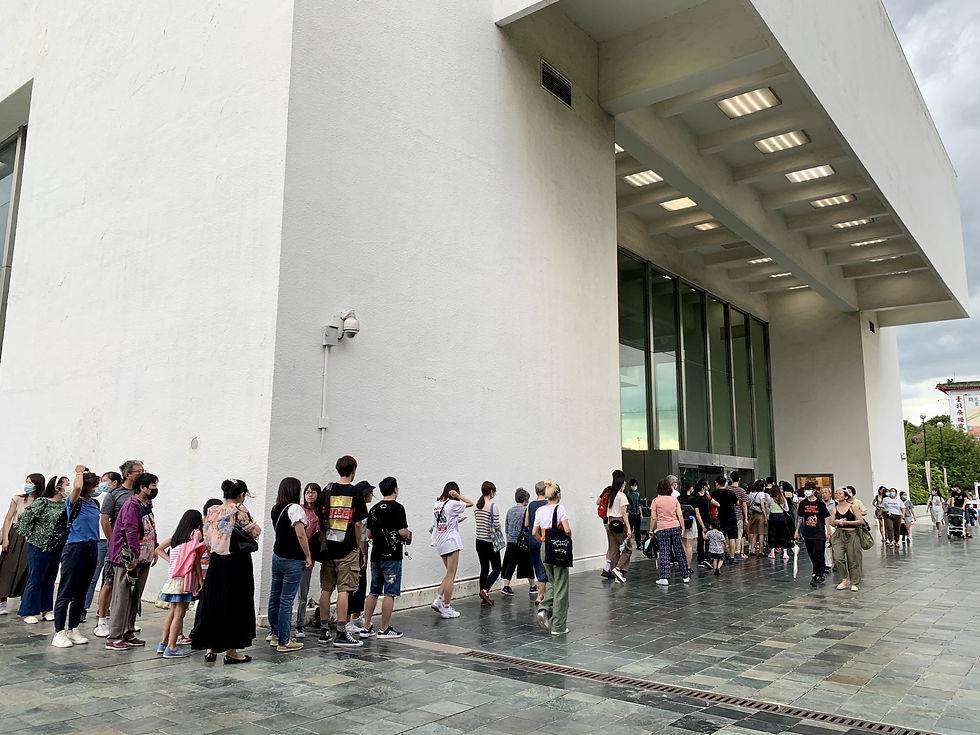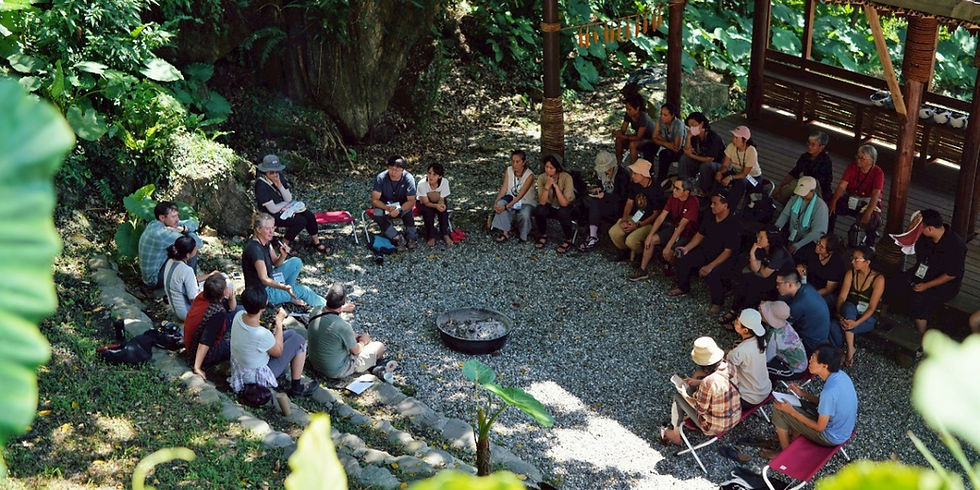Reflections of Paul Chiang: A Retrospective
- ACFI

- Aug 31, 2020
- 4 min read

After three months, the Paul Chiang: A Retrospective exhibition ended 28th June 2020. Paul Chiang, a name and face once known primarily to members of the art community became widespread. In total, Taipei Fine Arts Museum (TFAM) welcomed over 120,000 visitors.
From social media platforms such as Facebook and Instagram, several of the visitors – many whom are young, claimed to have revisited the exhibition two to three times; one revisited ten times bringing different groups of family and friends. The Alliance Cultural Foundation (ACF) learnt that this particular individual first discovered Chiang’s works with her daughter, a then junior high art student, in 2014 when visiting the From Paris to Taitung solo exhibition at the Taitung Art Museum. Her daughter, inspired by Chiang’s works went on to college to major in Fine Arts.

On the second floor of the exhibition, a floor with spiritual ambiance, sat the Meditation Room. The final week, the queue surpassed the hall into a different exhibition space with some waiting up to one-hour. The popular room held a composition of some of Chiang’s smaller-scaled works painted between 1980 and 2019, where many of the works implied spiritual imageries and signs of the cross. The dim lighting of the room created a deep sense of loneliness; and as one visitor described, ‘In that moment, I was able to understand Chiang’s years of loneliness, yet I sensed a glimmer of hope.’

Chiang frequently visited the exhibition. The times that he did, the young crowd in particular would share with him their likings for paintings particularly in the Medication Room as well as the Jinzun series and Jinzun/Transfigured Night. Jinzun/Transfigured Night is a white iron wire installation paired with Gustav Mahler’s Adagietto from Symphony No. 5.
Chiang and ACF Chair Stanley Yen shares a long friendship. With Chair Yen’s deep familiarity of Chiang’s works, TFAM hosted a day where Chair Yen served as docent for two-hours. With a sign-up of over 40 people, from start to finish, many more joined in to listen. Listeners were touched by the in-dept stories of Chiang’s creative vision and perceptions which allowed them a deeper insight into his thoughts.

For over 30 years, Chiang painted overseas. It was only until 1998 that he returned and settled in Taiwan. After moving to Taitung in 2008, bright colours began appearing in his works for the first time. The dramatic shift in style from depressed, dark and grey hues enthused much discussion.
Chiang’s abstract paintings gave visitors the room to imagine, to have a one-on-one dialogue between the painting and their thoughts.

‘Meeting an old friend’
Chiang was often seen at the exhibition halls. It was a rare opportunity for him to revisit some of his works that had been privately collected; some, which he hadn’t seen in over 30 years. To Chiang, it was as looking back at an old journal, meeting an old friend.
When seeing young artists at the exhibition, Chiang offered experiences and encouraged them to share their works with him. In Chiang’s years as an artist, he learnt that his best works were works that remained closest to the initial conception, rather than works that had been overworked. Works that remained closest to initial conception, he found, were generally 70-80% complete.
When Chiang saw young children at the exhibition he would approach them and encouraged parents to continue to bring them to museums. He believes that art education requires nurturing from a young age.

Activities and more
In effort to bring further awareness to the exhibition and Chiang, ACF formed an online presence via website, Facebook and Instagram. Additionally, ACF created an audio guide, a limited edition ticket, collaborated with Lion Pencil Co., Ltd in a limited edition Chiang-select coloured pastel set as well as initiated the Photograph Yourself into the Painting activity where visitors took photos of themselves into the painting. The activity encouraged visitors to see the paintings in a different light and inspired their own creativity. The photos, posted on Facebook and Instagram, promoted the exhibition vastly.
As many of Chiang’s works were inspired by classical music, ACF organized a small concert at the exhibition hall with pieces selected by Chiang. Cellist Victor Coo and Pianist Yahsin Wu performed Johann Sebastian Bach’s Prelude No. 1 in C Major, BWV 846, Felix Mendelssohn’s On Wings of Song Op. 34, No. 2, P. Tchaikovsky’s Andante Cantabile, Claude Debussy’s Clair de Lune and Beau Soir. When Chiang listens to these pieces, he is brought back to the early morning dawn before the start of his work day; they represent good memories.

Both Chiang’s life and character show great contrast. From a life of solitude – closing off from the world for years in his studio painting in dark and grey hues to sharing warmth, painting in bright vibrant colours. Chair Yen describes, “I feel that Chiang truly is a unique artist. On one hand, he preserves the artist authenticity, principal, creativity, and persistence; on the other, he is humble, flexible, kind, generous and good natured…”
Chiang’s entire life has been dedicated to art. On the closing day of the exhibition, Chiang’s wife, Claire Fan, his main supporter sent a message with a heart representing their many years together in this journey.
Special thank you to TFAM, guest curator Jason Chia-Chi Wang, collectors who loanedartworks to the exhibition, people of the art community, media friends, TFAM and ACF volunteers, and the visitors.





Comments